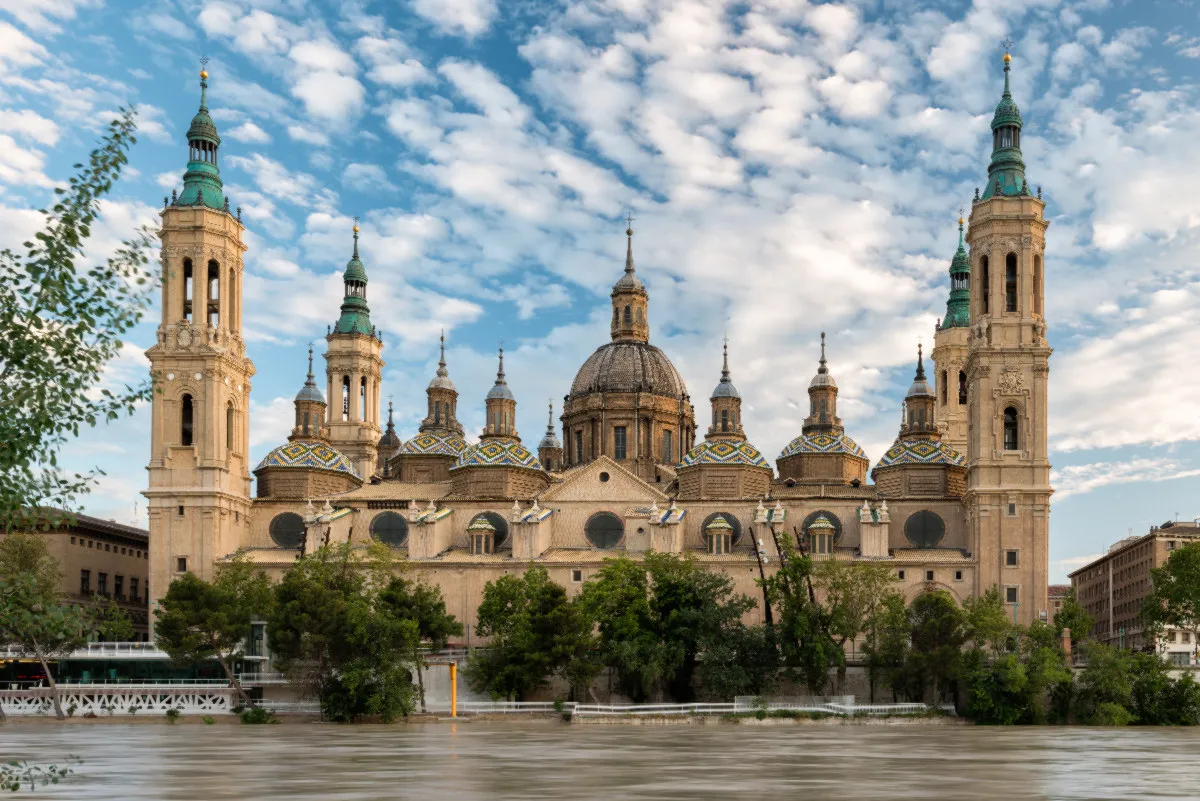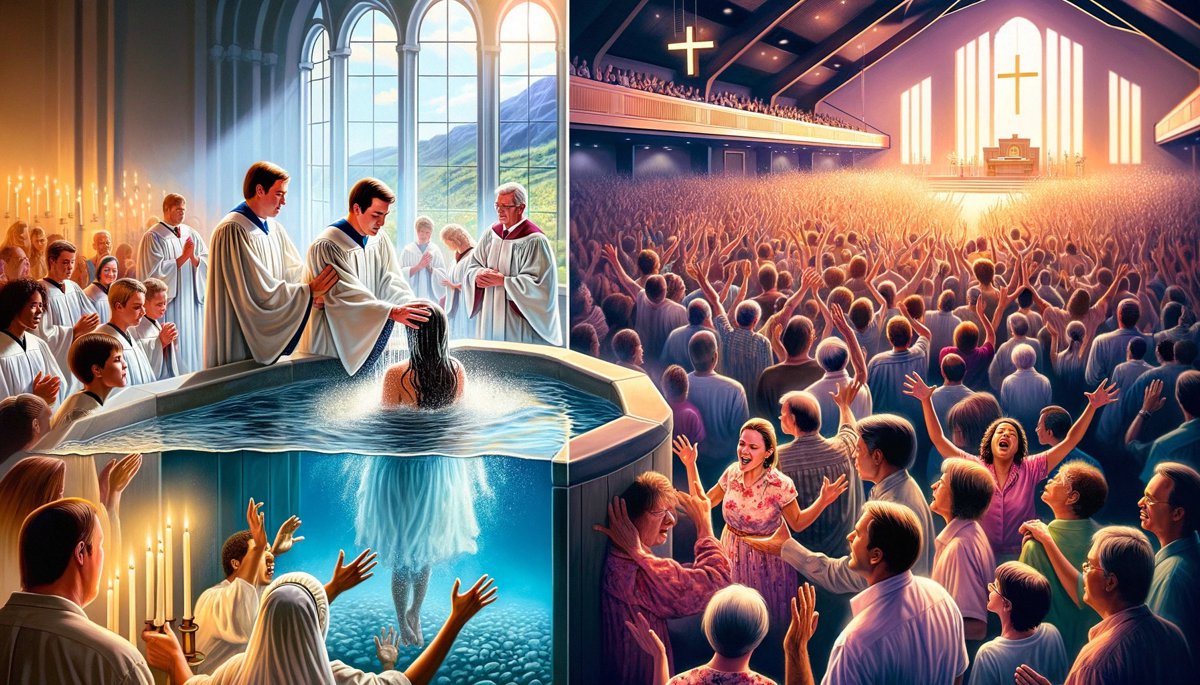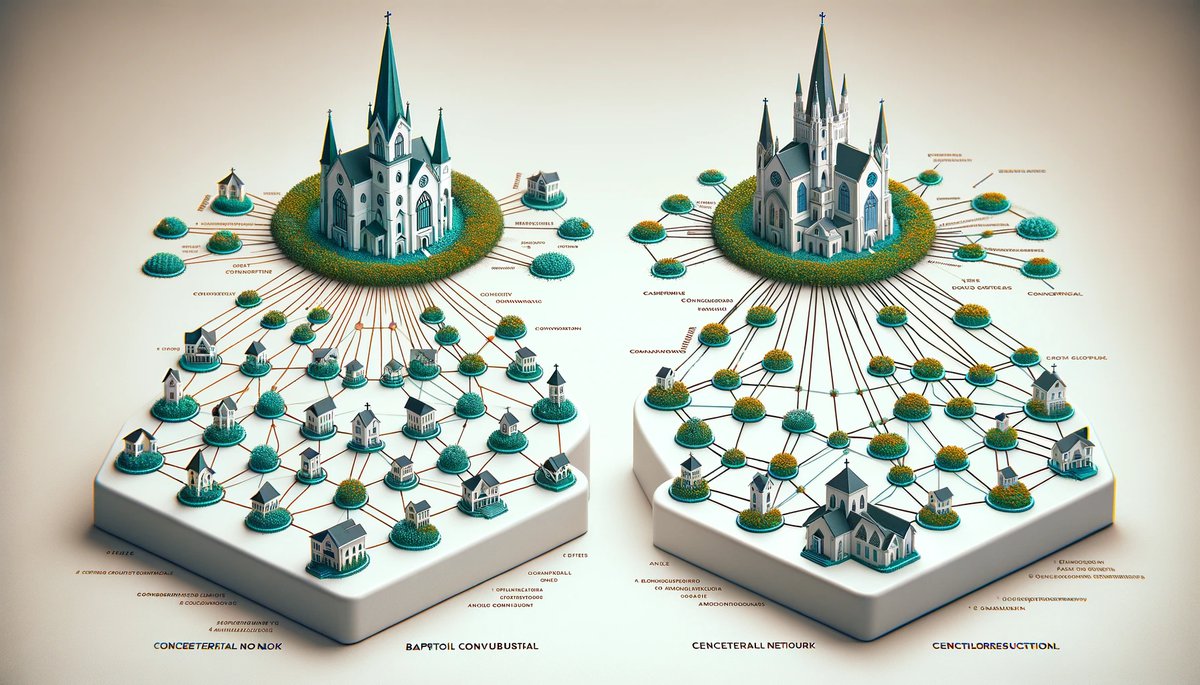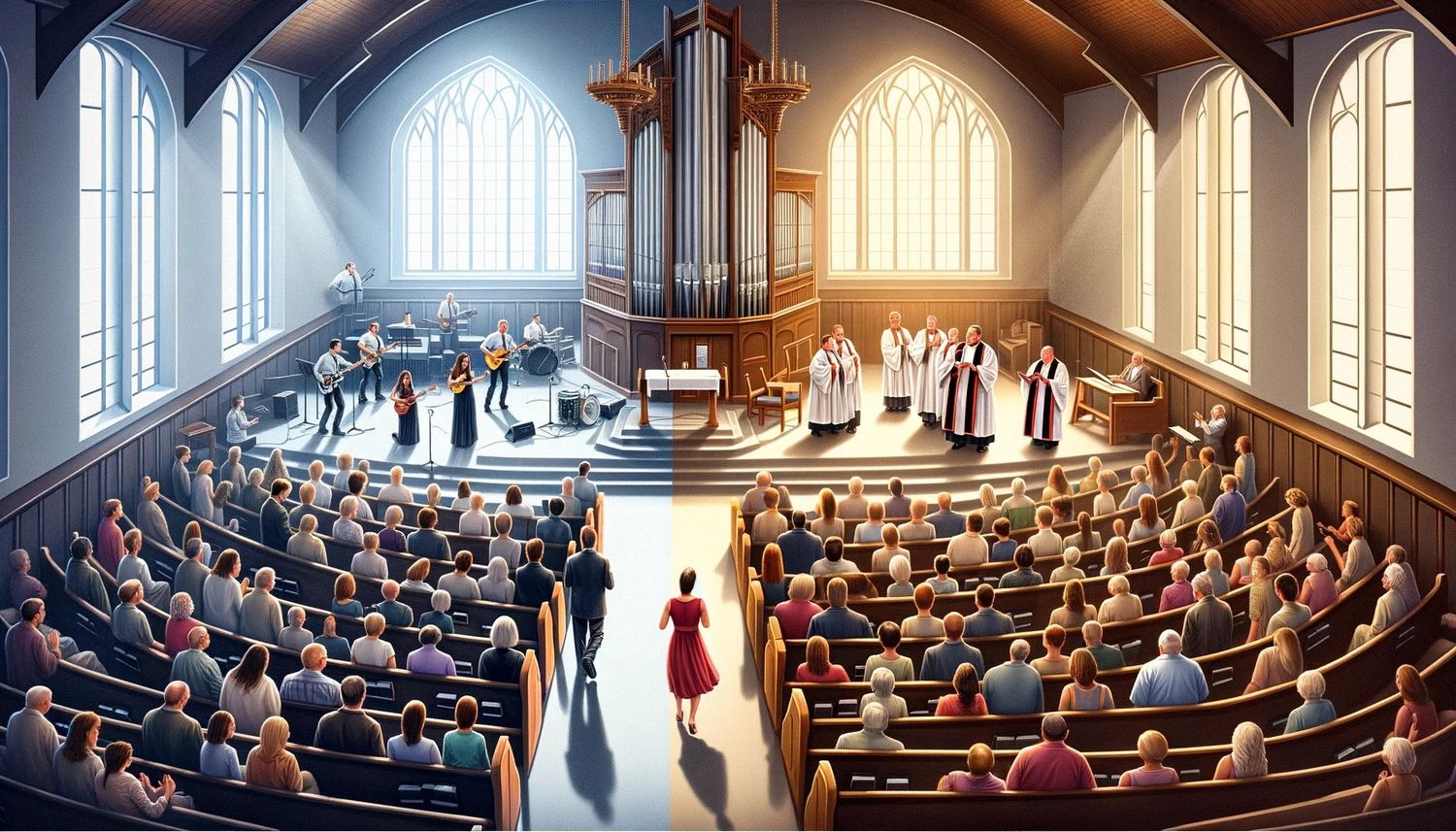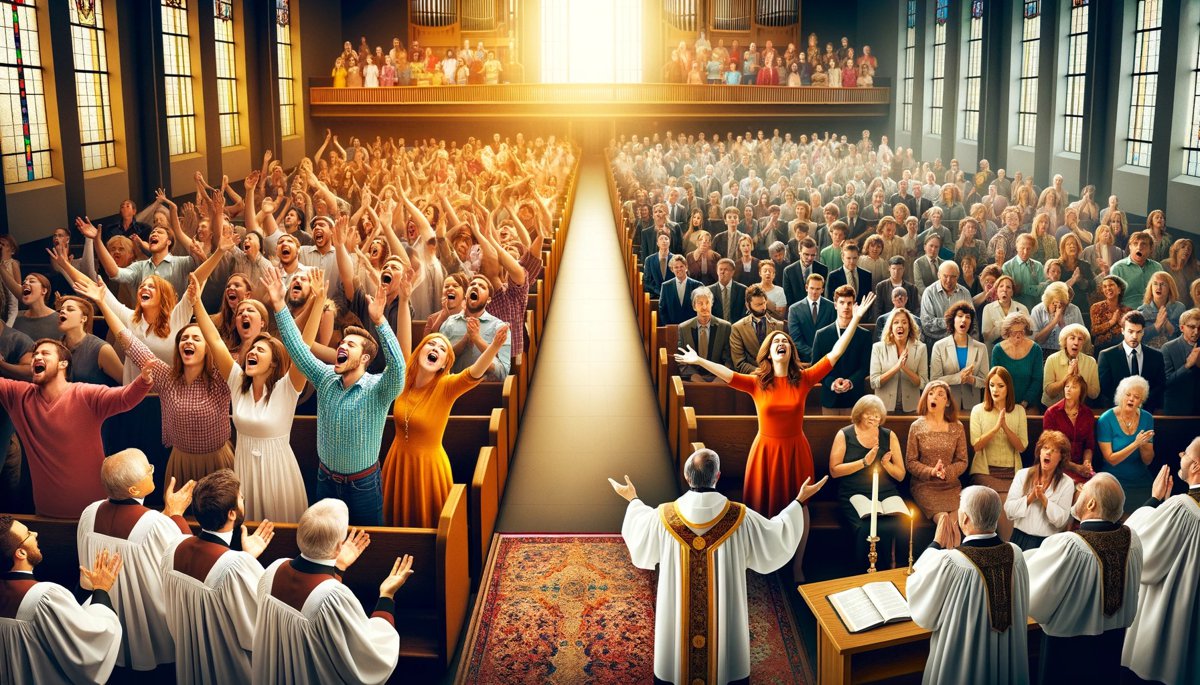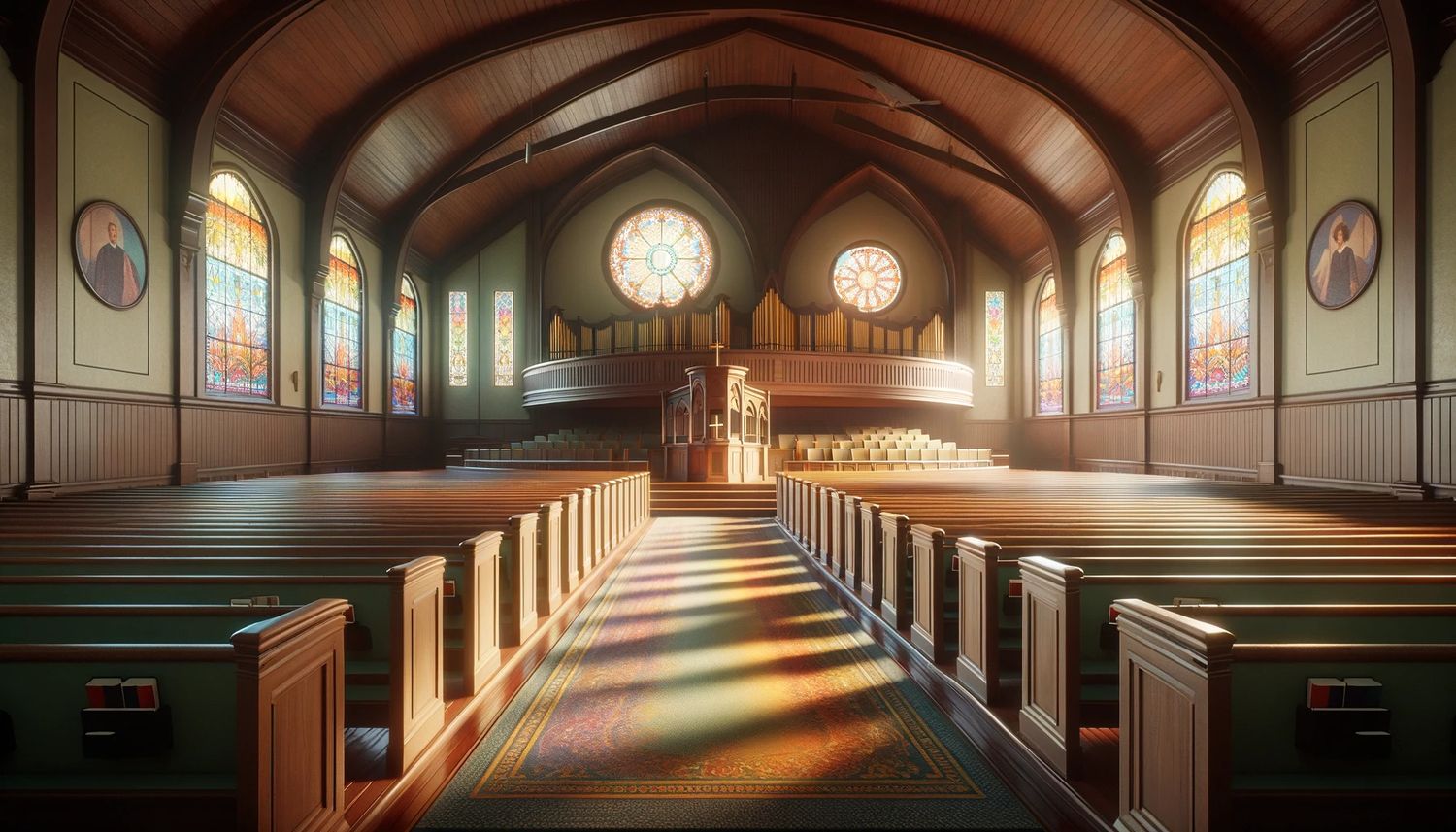Home>Arts and Culture>What Is The Difference Between A Cathedral And A Church?
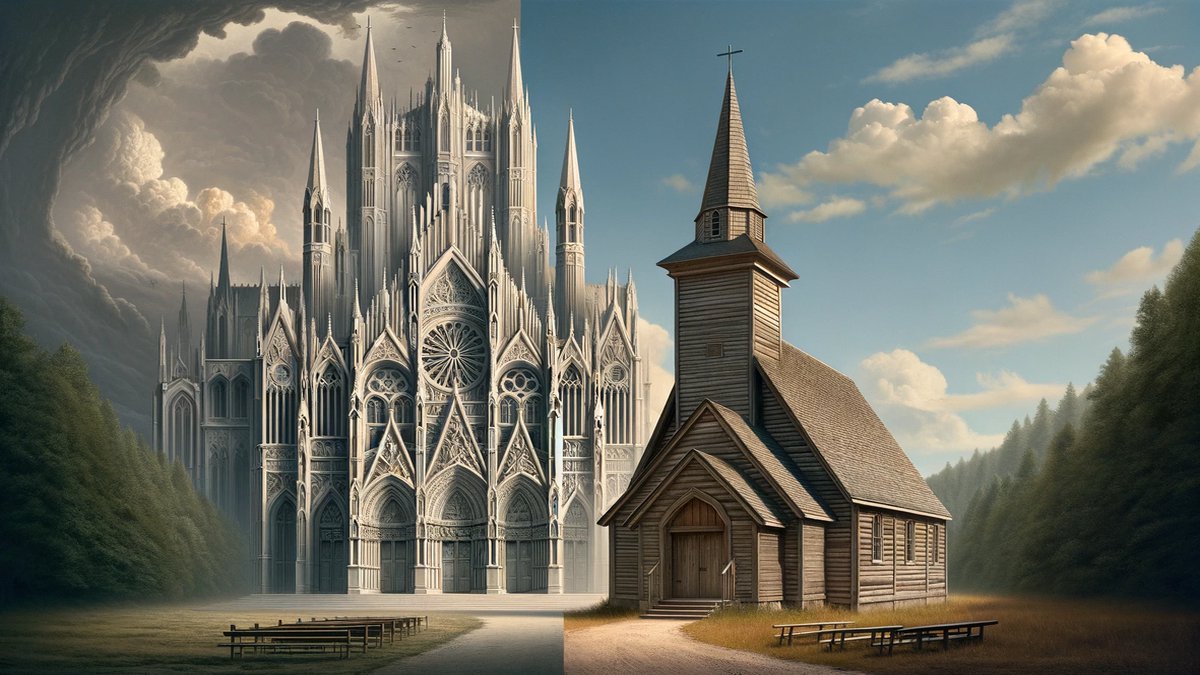

Arts and Culture
What Is The Difference Between A Cathedral And A Church?
Published: February 15, 2024
Jason DeRose, Managing Editor at Christian.net, uses his expertise in religion and journalism to deepen understanding of faith's societal impacts. His editorial leadership, coupled with a strong academic background, enriches the platform’s diverse content, earning him recognition in both journalism and religious circles.
Discover the nuances between cathedrals and churches in this insightful exploration of art and culture. Explore the architectural, historical, and cultural distinctions.
(Many of the links in this article redirect to a specific reviewed product. Your purchase of these products through affiliate links helps to generate commission for Christian.net, at no extra cost. Learn more)
Table of Contents
Introduction
When it comes to architectural marvels and spiritual sanctuaries, cathedrals and churches stand as timeless testaments to human creativity and devotion. These awe-inspiring structures have graced skylines for centuries, drawing the gaze of both faithful worshippers and curious travelers. While both cathedrals and churches serve as places of worship, they possess distinct characteristics that set them apart. Understanding the differences between these sacred spaces can deepen our appreciation for their unique roles in society and history.
In this article, we will embark on a captivating exploration of the disparities between cathedrals and churches, delving into their definitions, architectural variances, roles, functions, and historical significance. By unraveling the intricacies of these sacred edifices, we aim to shed light on their profound impact on culture, spirituality, and the human experience. Join us on this enlightening journey as we unravel the mysteries and marvels of cathedrals and churches, uncovering the essence of these timeless symbols of faith and artistry.
Definition of a Cathedral
A cathedral is a grand and imposing religious structure that serves as the central church of a diocese, typically housing the bishop's official seat or cathedra. This distinguished status bestows upon the cathedral a position of prominence within the ecclesiastical hierarchy, signifying its role as the mother church of the diocese. The term "cathedral" finds its roots in the Latin word "cathedra," which translates to "seat" or "throne," symbolizing the bishop's authority and spiritual leadership.
Cathedrals are renowned for their monumental scale, intricate architectural details, and profound spiritual significance. These majestic edifices often stand as towering symbols of faith and human ingenuity, captivating the hearts and minds of all who behold them. Their construction frequently spans decades, if not centuries, showcasing the unwavering dedication of countless artisans, craftsmen, and visionaries who contributed to their creation.
One of the defining features of a cathedral is its role as the primary church of a diocese, overseeing the spiritual affairs of the region and serving as a focal point for religious ceremonies, celebrations, and gatherings. This pivotal function underscores the cathedral's significance as a unifying force within the community, offering solace, guidance, and a sense of collective belonging to its worshippers.
Furthermore, cathedrals often exhibit a remarkable blend of architectural styles, reflecting the evolving tastes, beliefs, and cultural influences of the eras in which they were built. From the soaring Gothic spires of Notre-Dame de Paris to the majestic domes of St. Peter's Basilica, each cathedral bears the indelible imprint of its historical context, embodying a rich tapestry of artistic expression and spiritual devotion.
In essence, a cathedral stands as a testament to the enduring power of faith and the boundless creativity of humanity, beckoning visitors to marvel at its splendor and contemplate the mysteries of existence. Its significance transcends mere physical presence, encompassing a profound spiritual legacy that resonates through the corridors of time, inspiring reverence and wonder in all who cross its threshold.
Definition of a Church
A church, in its most fundamental essence, is a place of worship and spiritual gathering for a religious community. Unlike cathedrals, which hold a position of authority within a diocese, churches encompass a diverse array of denominations and sizes, ranging from quaint rural chapels to grand urban sanctuaries. The term "church" originates from the Greek word "kuriakon," meaning "belonging to the Lord," encapsulating the sacred purpose and communal ownership of these revered spaces.
At the heart of every church lies a profound sense of unity, faith, and communal devotion. These sanctuaries serve as havens for congregants to come together in prayer, reflection, and celebration, fostering a sense of spiritual kinship and shared purpose. Whether adorned with ornate stained glass windows or adorned with simple wooden pews, churches exude an aura of tranquility and reverence, inviting worshippers to seek solace and connection with the divine.
Furthermore, churches often serve as focal points for a myriad of religious rites and ceremonies, including baptisms, weddings, and funerals, marking significant milestones in the lives of their congregants. They also provide a platform for religious education, community outreach, and charitable endeavors, embodying a multifaceted role as both a spiritual sanctuary and a catalyst for positive change within society.
In terms of architectural diversity, churches showcase a captivating range of styles and influences, reflecting the cultural, historical, and artistic tapestries of their respective regions. From the iconic steeples of New England churches to the intricate mosaics of Byzantine basilicas, each church bears the indelible imprint of its heritage, embodying a timeless testament to human creativity and devotion.
In essence, a church stands as a testament to the enduring power of faith and the boundless creativity of humanity, beckoning visitors to marvel at its splendor and contemplate the mysteries of existence. Its significance transcends mere physical presence, encompassing a profound spiritual legacy that resonates through the corridors of time, inspiring reverence and wonder in all who cross its threshold.
Architectural Differences
The architectural disparities between cathedrals and churches are as diverse and captivating as the histories and cultures they represent. While both structures share a common purpose as places of worship, their architectural nuances reflect their distinct roles, influences, and historical contexts.
Cathedrals, with their grandiose scale and intricate detailing, often epitomize the pinnacle of architectural achievement within a region. These monumental edifices frequently boast soaring spires, majestic domes, and awe-inspiring stained glass windows, embodying the zenith of Gothic, Romanesque, or Renaissance architectural styles. The sheer magnitude of cathedrals, coupled with their ornate facades and elaborate interior adornments, serves as a testament to the wealth, power, and spiritual fervor of the societies that commissioned their construction.
In contrast, churches, while equally reverent in their purpose, encompass a more diverse array of architectural expressions. From the humble simplicity of rural chapels to the resplendent grandeur of urban basilicas, churches reflect the unique cultural, religious, and artistic influences of their respective communities. Their architectural styles range from the austere elegance of Early Christian basilicas to the opulent splendor of Baroque and Rococo churches, showcasing a rich tapestry of design elements, decorative motifs, and regional variations.
Moreover, cathedrals often serve as showcases of architectural innovation and mastery, featuring intricate stone carvings, towering vaulted ceilings, and elaborate flying buttresses that defy gravity and inspire awe. These structural marvels stand as enduring testaments to the ingenuity and craftsmanship of the artisans and architects who brought them to life, leaving an indelible imprint on the skylines and imaginations of generations.
On the other hand, churches, while equally diverse in their architectural expressions, often exude a sense of intimacy and community, with their inviting facades, cozy chapels, and warm, welcoming interiors. Whether adorned with ornate frescoes, intricate woodwork, or minimalist design elements, churches encapsulate the essence of spiritual sanctuaries, offering solace, inspiration, and a sense of belonging to all who seek refuge within their hallowed walls.
In essence, the architectural disparities between cathedrals and churches encapsulate the multifaceted tapestry of human creativity, spirituality, and cultural expression. Each structure, whether a towering cathedral or a humble village church, stands as a testament to the enduring legacy of faith and artistry, inviting visitors to marvel at their splendor and contemplate the profound connections between architecture, history, and the human spirit.
Role and Function
The role and function of cathedrals and churches extend far beyond their physical presence as architectural marvels; they serve as vital pillars of spiritual, communal, and societal cohesion. Cathedrals, as the central churches of dioceses, hold a position of profound significance within the ecclesiastical hierarchy. They serve as the seat of the bishop, symbolizing spiritual authority and leadership within the region. This pivotal role imbues cathedrals with the responsibility of overseeing the spiritual affairs of the diocese, guiding congregants through religious rites, sacraments, and pastoral care. Additionally, cathedrals often serve as venues for grand religious ceremonies, such as ordinations, enthronements, and episcopal consecrations, further solidifying their role as epicenters of religious authority and tradition.
In contrast, churches, while equally sacred in their purpose, cater to a diverse array of denominations and religious communities. Their role as places of worship and communal gathering fosters a sense of unity, faith, and shared devotion among congregants. Churches serve as sanctuaries for congregational worship, prayer, and spiritual contemplation, providing a space for individuals to seek solace, guidance, and connection with the divine. Moreover, churches often play a pivotal role in hosting a myriad of religious ceremonies and rites, including baptisms, weddings, and funerals, marking significant milestones in the lives of their congregants.
Both cathedrals and churches function as hubs of spiritual education, community outreach, and charitable endeavors, embodying a multifaceted role as catalysts for positive change within society. They offer platforms for religious instruction, theological discourse, and moral guidance, nurturing the spiritual growth and ethical development of their congregants. Furthermore, these sacred spaces often engage in philanthropic initiatives, providing aid to the less fortunate, advocating for social justice, and fostering a sense of compassion and empathy within their communities.
In essence, the role and function of cathedrals and churches transcend mere architectural significance, encompassing a profound impact on the spiritual, communal, and societal fabric of humanity. Their enduring legacy as bastions of faith, compassion, and cultural heritage underscores their indispensable role in shaping the collective identity and values of societies across the globe.
Historical Significance
The historical significance of cathedrals and churches spans centuries, weaving a rich tapestry of cultural, religious, and architectural evolution. These sacred edifices stand as living chronicles of human history, bearing witness to the triumphs, tribulations, and transformative moments that have shaped civilizations and societies.
Cathedrals, with their imposing presence and intricate craftsmanship, serve as tangible reflections of the socio-political and religious dynamics of their eras. From the majestic Notre-Dame de Chartres to the awe-inspiring Milan Cathedral, each cathedral embodies the aspirations, beliefs, and artistic achievements of the communities that brought them to life. Their construction often paralleled pivotal historical epochs, witnessing the rise and fall of empires, the dawn of new artistic movements, and the enduring resilience of faith in the face of adversity.
Furthermore, cathedrals played a pivotal role in the dissemination of knowledge, serving as centers of learning, innovation, and cultural exchange. The grand libraries, ornate chapels, and intricate sculptures housed within these sacred precincts encapsulated the intellectual and spiritual pursuits of their creators, leaving an indelible mark on the intellectual heritage of humanity.
In contrast, churches, while equally steeped in historical significance, embody a more intimate and localized narrative of human experience. From the humble parish churches nestled in rural hamlets to the resplendent basilicas adorning bustling cityscapes, churches reflect the ebb and flow of local traditions, customs, and religious practices. Their historical significance lies in their ability to encapsulate the everyday lives, aspirations, and communal bonds of the individuals and families who sought solace and spiritual nourishment within their hallowed confines.
Moreover, churches often bore witness to pivotal historical events, serving as sanctuaries, meeting places, and rallying points for communities in times of upheaval and transformation. Whether sheltering refugees during times of war, bearing witness to social movements, or standing as symbols of resilience in the face of adversity, churches have etched their place in the annals of history as beacons of hope, solidarity, and enduring faith.
In essence, the historical significance of cathedrals and churches transcends mere architectural and religious symbolism, embodying the collective memory, resilience, and cultural heritage of humanity. Their enduring legacy serves as a testament to the enduring power of faith, creativity, and the indomitable spirit of human endeavor.
Conclusion
In conclusion, the distinction between cathedrals and churches extends beyond mere architectural variances; it encompasses a profound tapestry of historical, spiritual, and societal significance. Cathedrals, with their grandeur and authority as the central churches of dioceses, stand as enduring symbols of religious leadership, architectural mastery, and cultural heritage. Their towering spires, intricate carvings, and resplendent interiors bear witness to the aspirations, beliefs, and artistic achievements of the societies that brought them to life. Moreover, cathedrals serve as repositories of knowledge, centers of spiritual guidance, and bastions of resilience, embodying the enduring legacy of faith and human creativity.
On the other hand, churches, while equally sacred in their purpose, encapsulate the intimate narratives of local communities, reflecting the everyday lives, aspirations, and communal bonds of their congregants. From the humble chapels nestled in rural landscapes to the opulent basilicas adorning urban skylines, churches serve as havens of spiritual solace, communal gathering, and historical continuity. Their historical significance lies in their ability to encapsulate the ebb and flow of local traditions, customs, and religious practices, bearing witness to the triumphs and tribulations of the human spirit.
As we reflect on the profound impact of cathedrals and churches, it becomes evident that these sacred edifices transcend mere physical structures; they embody the enduring legacy of faith, resilience, and cultural heritage. Their architectural splendor, historical resonance, and spiritual significance serve as timeless testaments to the boundless creativity and unwavering devotion of humanity. Whether gazing upon the celestial vaults of a cathedral or seeking solace within the tranquil embrace of a church, one cannot help but be captivated by the enduring allure and profound significance of these timeless symbols of faith and artistry.
